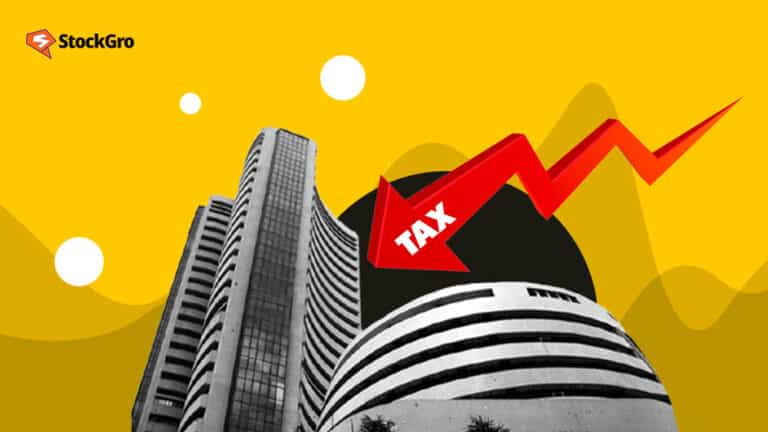
From increasing the rebate to tweaking the number of slabs, the Budget 2023 has introduced a myriad of changes to the Indian tax regime. And to top it off, there are some great tax-saving schemes in the budget to aid the middle class.
These special schemes allow you to invest your money and become eligible for incredible tax deductions and exemptions under various sections of the Income Tax Act of 1961.
Let’s delve into the details. The Income Tax Act has essential sections such as 80C, 80D, 80CCF, and more. Think of these sections as gateways to tax deductions, effectively reducing your tax bill and making it much less scary.
What’s even better is that both the government and private sector organizations have your back! They offer a range of enticing tax-saving options specifically designed for people like you.
So, if you want to save some of your hard-earned money from the clutches of taxes, hop on board and explore these tax saving schemes in India. Get ready to make your taxes a little more manageable and your wallet a little happier!
You may also like: What is demat account: All you need to know?
United Link Insurance Plan (ULIP)
Introducing the ULIP Life Insurance Plan, one of India’s top tax-saving investment options! It ensures financial stability for your family in case of an unfortunate event and brings tax benefits.
- You can deduct up to Rs. 1.5 lakh from your taxable income for life insurance premium payments under Section 80C of the Income Tax Act.
- Plus, the income on policy maturity is tax-free under Section 10(10D), as long as the premium is less than 10% of the sum assured.
- If you bought the policy before March 31, 2012, you can claim a 20% tax deduction on the premium.
- For policies purchased after April 1, 2012, the deduction is up to 10% of the sum assured.
With ULIP, you get financial protection, tax savings, and peace of mind—all in one plan!
Public Provident Fund (PPF)
The Public Provident Fund (PPF) is your secret weapon for saving on taxes and growing your money. It’s tax-exempt throughout the investment lifecycle – no taxes on your contributions, interest earned, or withdrawals.
You can open a PPF account at a bank or post office, making it super convenient. Investing in PPF allows you to claim a deduction under section 80C of the income tax act, reducing your taxable income by up to Rs. 1.5 lakhs.
With a 15-year lock-in period, PPF offers two options at maturity: withdraw the proceeds for personal use or extend the account for another 5 years to continue enjoying tax benefits and interest earnings.
ELSS Mutual Funds
What’s the deal with these income tax-saving funds? Well, there’s a short lock-in period of around 3 years which is the shortest among investment products. No need to wait forever for your funds to grow!
Also Read: Everything you need to know about ELSS mutual funds
Here’s the icing on the cake: investing in ELSS mutual funds brings tax benefits under section 80C of the income tax act. You can deduct up to Rs. 1.5 lakh from your taxable income. Save on taxes while your money grows. It’s as if you are hitting 2 birds with a single stone.
ELSS funds aren’t for the faint of heart. They carry inherent risks due to equity investments. But hey, no risk, no reward, right? ELSS mutual funds could be your new best friend if you’re ready for some risk-taking and serious tax savings.
Keep in mind these funds favour the long game. Stay invested for a while to maximize returns.
Fixed Deposits
Let’s talk about tax-saving fixed deposits, the smart way to save on taxes and keep your money safe. It’s a less risky savings scheme compared to stocks. In tax-saving fixed deposits, the bank determines the interest based on various factors.
Have a look at these features:
- Investing in tax-saving fixed deposits allows you to deduct the amount from your taxable income under section 80C.
- Once invested, your money remains locked for a minimum of 5 years.
- Senior citizens enjoy higher interest rates on their investments.
- The main account holder can benefit from the tax deduction in joint accounts.
- These tax-saving options don’t allow premature withdrawals during the 5-year lock-in period.
To make this journey easier, here is a table about the FD interest rates from different banks.
| Bank Name | FD Rates for General Citizens | FD Rates for Senior Citizens |
|---|---|---|
| SBI | 3% to 7.10% | 3.50% to 7.60% |
| HDFC Bank | 3% to 7.25% | 3.50% to 7.75% |
| ICICI Bank | 3% to 7.10% | 3.50% to 7.60% |
| PNB | 3.50% to 7.25% | 4% to 7.75% |
| Axis Bank | 3.5% to 7.10% | 3.50% to 7.85% |
| Kotak Mahindra Bank | 2.75% to 7.20% | 3.25% to 7.70% |
| Bank of Baroda | 3% to 7.25% | 3.50% to 7.55% |
So, tax-saving fixed deposit options are like a win-win situation. You save on taxes, keep your money secure, and can even earn some interest along the way. Just be sure to understand all the terms and conditions before you jump in.
NPS (National Pension Scheme)
The NPS, regulated by PFRDA, is a market-linked retirement product that enables systematic savings for Indian citizens.
Initially designed for government employees, it became available to all salaried individuals in 2009. NPS is a flexible and portable scheme recommended by tax experts as a popular tax-saving option.
It offers tax deductions of up to 1.5 lakh rupees under Section 80C and an additional deduction of Rs. 50,000 under Section 80CCD(1B). Individuals between the ages of 18 and 60 can contribute to this scheme, with a maximum entry age of 70 years.
The NPS provides an interest rate ranging from 9% to 12% and requires a minimum contribution of ₹500.
Also Read: The world of ETFs – explained in simple terms
Senior Citizen Saving Scheme (SCSS)
The Senior Citizen Saving Scheme (SCSS) is a very special tax scheme backed by the Indian government for all those citizens aged 60 and above.
Now, why should you consider this scheme? Well, it offers a pretty great interest rate of 7.4%, which is the highest you can get from any other government plan.
Here’s how it works: you need to invest a minimum of ₹1000 and go up to ₹15 lakhs. The investment period is around 5 years, giving you plenty of time to let your money grow. But wait, there’s more! Your principal amount is eligible for a tax deduction under section 80C. So, not only are you saving for the future, but you’re also getting a little tax break.
Keep in mind that these are just a few gems in the vast tax-saving treasure chest.
There are more tax benefit schemes to explore, like the repayment of education loans, donations to charitable organizations, and even specific allowances like House Rent Allowance (HRA). So, gear up, be informed, and let the joy of tax savings guide you to financial bliss!

